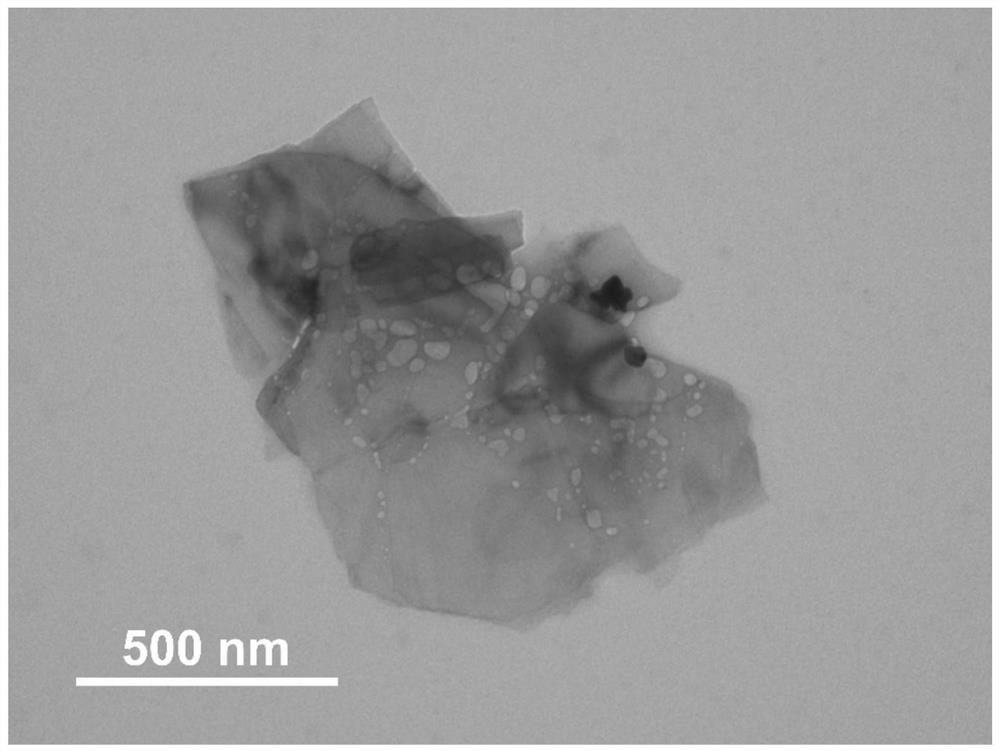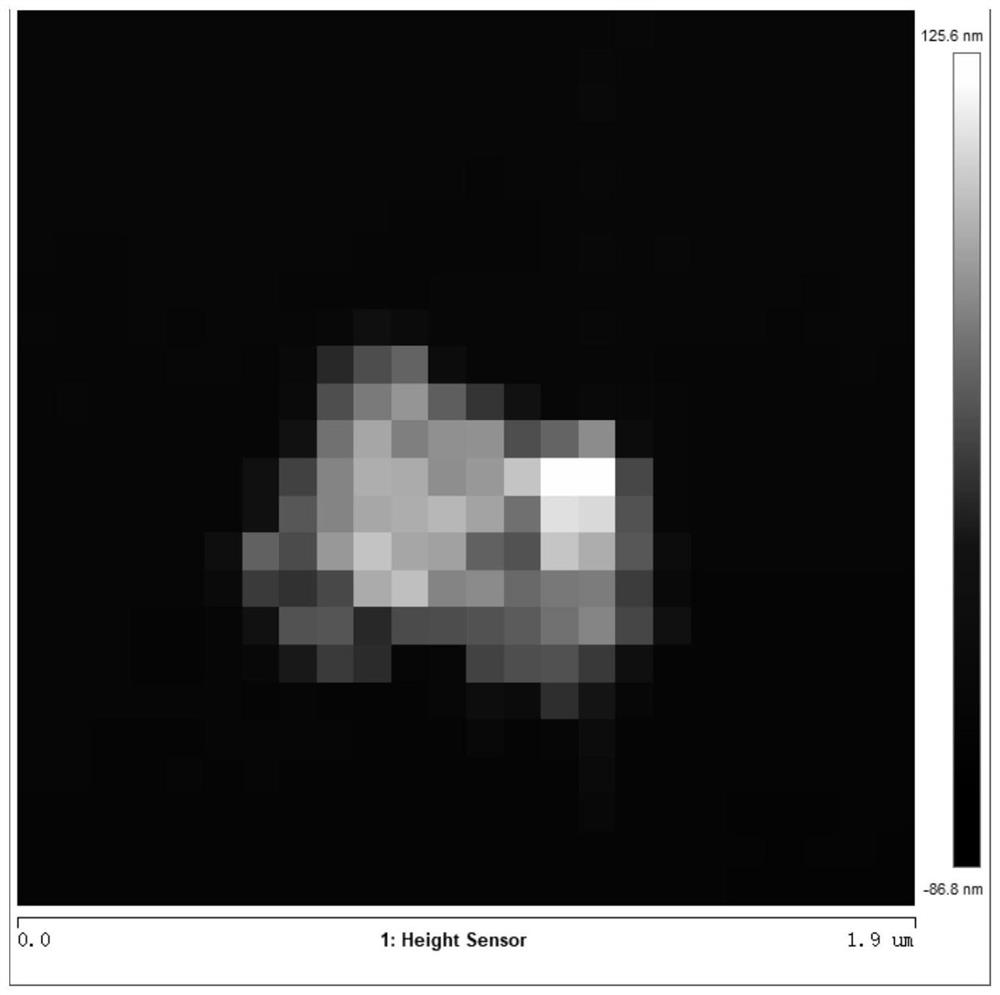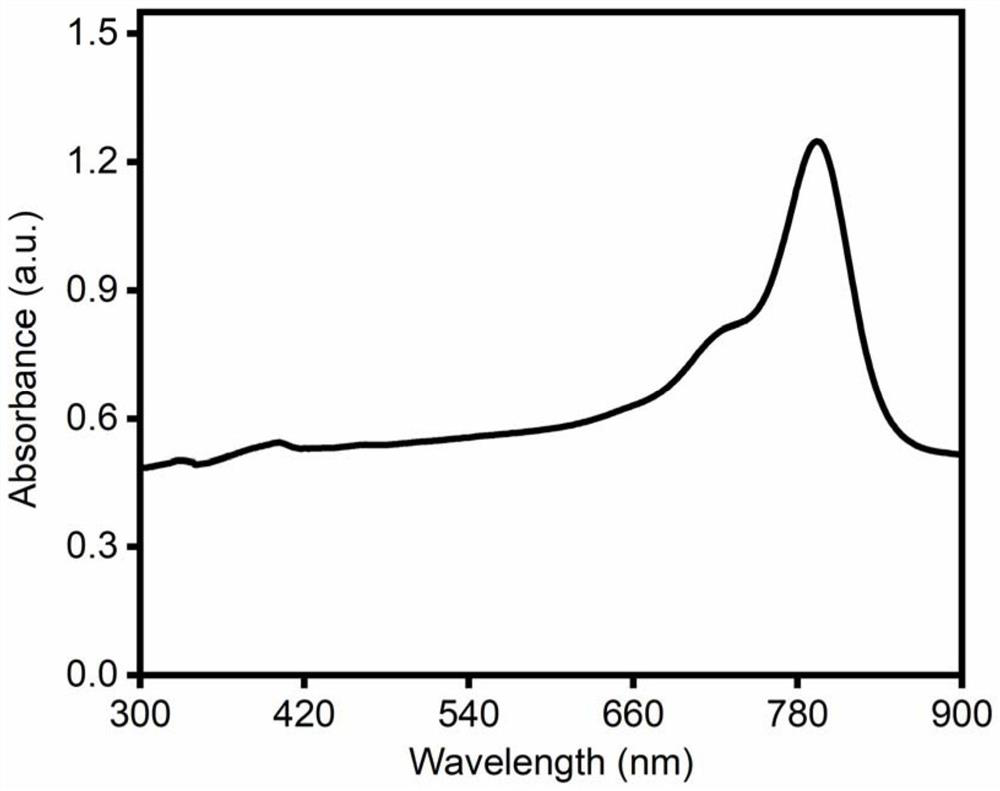Preparation and application of a black phosphorus nanosheet-supported indocyanine green nanosystem
An indocyanine green and nanosheet technology, which is applied in the field of clinical imaging of diagnostic agents, can solve the problems of reducing fluorescence imaging effect and poor stability, and achieves the effects of simple and easy operation, mild preparation conditions, and reduced toxic and side effects.
- Summary
- Abstract
- Description
- Claims
- Application Information
AI Technical Summary
Problems solved by technology
Method used
Image
Examples
Embodiment 1
[0040] 1. Pour nitrogen into the stripped black phosphorus suspension and keep it in this state for 30 minutes to remove oxygen. Use a domestic high-speed centrifuge at 2500 rpm to screen out the black phosphorus nanosheet precipitate of this size. The obtained black phosphorus nanosheets were dispersed in ethanol, and the particle size was determined by transmission electron microscope. The result is as figure 1 As shown, the prepared black phosphorus nanosheets have a size of 892 ± 16 nm
[0041] 2. Weigh 25 mg of the obtained black phosphorus nanosheets, disperse it into 25 mL of normal saline, and place it in a 50 mL Shrek bottle. Nitrogen gas was introduced into it, kept in this state for 30 minutes, and sealed with a rubber stopper. It was then placed in a water bath at 25°C for 2 hours to sonicate, so that the black phosphorus nanosheets were uniformly dispersed. Then, 2.5 mL of indocyanine green (10 mg / mL) dispersion was slowly poured into it, and 20 mL of aminated...
Embodiment 2
[0043] 1. Pour nitrogen into the stripped black phosphorus suspension and keep it in this state for 30 minutes to remove oxygen. Using a domestic high-speed centrifuge at 7500 rpm, the black phosphorus nanosheet precipitate of this size was screened out. The obtained black phosphorus nanosheets were dispersed in ethanol, and the particle size was determined by transmission electron microscope. The result is as image 3 As shown, the size of the prepared black phosphorus nanosheets is 312±12 nm.
[0044] 2. Weigh 25 mg of the prepared black phosphorus nanosheets, disperse it into 25 mL of normal saline, and place it in a 50 mL Shrek bottle. Nitrogen gas was introduced into it, kept in this state for 30 minutes, and sealed with a rubber stopper. It was then placed in a water bath at 25°C for 2 hours to sonicate, so that the black phosphorus nanosheets were uniformly dispersed. Then, 2.5 mL of indocyanine green (10 mg / mL) dispersion was slowly poured into it, and 20 mL of ami...
Embodiment 3
[0046] Weigh a certain amount of ICG@BPNS-PEG solid and free indocyanine green screened at different speeds, and the concentration of indocyanine green was kept at 2 mg / mL. Three groups of female BALB / c nude mice (4-6 weeks, body weight 15-20 mg) were injected subcutaneously with 2*10 5 4T1 breast cancer cells, when the tumor volume reaches 50mm 3 time (tumor volume calculation formula: tumor length × (tumor width) 2 / 2), two groups of mice were injected with ICG@BPNS-PEG at different rotational speeds into the tail vein as the experimental group, and the remaining group of mice were injected with free indocyanine green into the tail vein as the control group. Take pictures and observe under the small animal imager after 6 hours,
[0047] Compared figure 1 and Figure 4 As a result, the size of the black phosphorus nanosheets screened by high-speed centrifugation is smaller, and the black phosphorus nanosheets also have the structural characteristics of thin layers. The sm...
PUM
| Property | Measurement | Unit |
|---|---|---|
| size | aaaaa | aaaaa |
Abstract
Description
Claims
Application Information
 Login to View More
Login to View More - R&D
- Intellectual Property
- Life Sciences
- Materials
- Tech Scout
- Unparalleled Data Quality
- Higher Quality Content
- 60% Fewer Hallucinations
Browse by: Latest US Patents, China's latest patents, Technical Efficacy Thesaurus, Application Domain, Technology Topic, Popular Technical Reports.
© 2025 PatSnap. All rights reserved.Legal|Privacy policy|Modern Slavery Act Transparency Statement|Sitemap|About US| Contact US: help@patsnap.com



